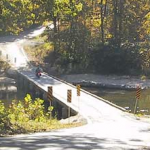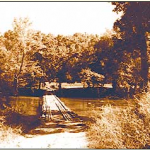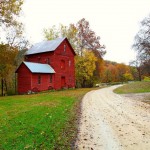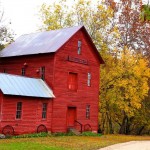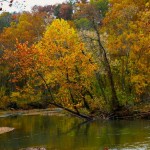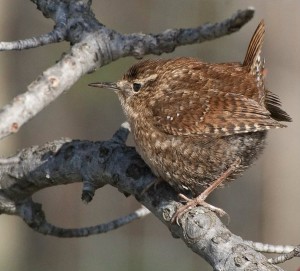
Riveroflife
Posts by :


Part 4 Topaz to Twin Bridges
We camped in a small field just below Topaz on the east bank of the North Fork on the 3rd night. The river was markedly larger at this point; with increased volume form the many smaller springs that poured in since we started 2 days ago. We also noticed that the affect the violent storm and torrential rain had on the water level and clarity was gone. The river was very clear once again; in fact so clear that it was nearly impossible to gauge the depth now. Ten feet deep looked like two feet deep. A slight blueing or greening of the water occurred only in the deepest spots but only if the sun angle was right. Twice the depth was misjudged the evening before which is a cold and wet mistake.
These mistakes reminded me of the same mistakes made by Henry Rowe Schoolcraft, an explorer who first saw this country, at the same location in the winter of 1818:
Thursday Nov. 5, 1818: “I begin my tour where other travelers have ended theirs, on the confines of wilderness…”
Schoolcraft called the North Fork “the Limestone River” because of all the limestone in the river valley. He wrote that the river was “wholly composed of springs” flowing pure, cold, and clear water. Schoolcraft visited Topaz Spring, which feeds the North Fork River and later became the site of a water mill for settlers. Schoolcraft called it Elkhorn Spring because he found an elk horn there.
Saturday, Nov 21, in the valley of the North Fork: “The bottom-lands continue to improve both in quality and extent, and growth of cane is more vigorous and green, and affords a nutritious food our horse. The bluffs on each side of the valley continue, and are covered by the yellow pine.” Schoolcraft and his companion saw flocks of turkey and ducks, as well as a great many deer, squirrels, and beaver. Bear and elk were also common. And the rivers were deep.
Once, they found a place to cross the North Fork that they thought was only two or three feet deep. The water was so clear that what looked easy to wade turned out to be so deep that their pack-horse fell in and had to swim across. The water spoiled or damaged much of their provisions of meal, salt, sugar, tea, and powder for their guns. Soon after they were lucky to find a trail that led to a cabin where a settler family gave them food. The diet of the settlers they found was composed of meat from wild animals and meal ground from corn grown by their cabins.
And so it went nearly 150 years later. That night we slept soundly except once again about 3 AM this time lightening began to the Northwest again. This time I was really wired and ready for another giant storm, but even though the wind blew hard and the hail fell, that seemed to be the extent of it. Of course, that meant in the morning we would have to take time for tent drying to take place; as it still smelled damp when we threw the tent this evening.
The next morning it was much cooler and the sky fair, almost cold for June. I pulled on a sweater that I brought in case, and was glad to have it until about 9-10 AM. We cleaned up the site and policed the camp, loaded the canoe, and started day three. The fly rod and the maps and charts were readied again for the days journey. The first few turns and twists of the North Fork were beautiful with plenty of deep holes, and loaded the bedrock and ledges; also some large rocks were in the center of the river here and there reminding us that they had fallen into the river a long time ago (in geological terms). We scared a female Wood Duck with her large brood of ducklings. She did exactly what we had seen so many time; acting wounded, spacing, and making as much commotion as she could to direct our attention from her babies, which we saw lined up in a row under some saplings on the left bank.
Just after the wood duck entertainment, we saw a very sizable creek entering the river from the left. It was very clear, and was beautiful and looked floatable. We stopped at the mouth, and identified it as Indian Creek. Indian Creek has a sizable drainage from near Cabool, 20 miles to the north, to its confluence with the North Fork. A decision was made to pull the Old Town by a painter rope up Indian Creek, until we could go no further and spend the fourth night up stream somewhere. This was a chance for us to explore a tributary of the North Fork.
Indian Creek is beautiful and was in our minds worthy of a Missouri Nature Area, but at that time no such designation existed. The stream was even clearer than the North Fork. It ran cold and fast over gravel and bedrock. Large rocks dotted the lower mile or two as if they had tumbled down the surrounding hillsides. The creek valley was narrow with no noticeable alluvial land. The stream was large enough that smaller sized smallmouth bass and goggle-eyes were spawning and the beds were noticeable wherever the depth reached 3-4 feet. Shortleaf pines frequently grew down to waters edge, which gave the impression to us that this was not like Missouri as we knew it. The sweet smell of blooming wild roses permeated the entire valley. We so no evidence of farms, homes, lodges, or river cabins. At one point, in a high spot off to our right, we saw a nice stone foundation from a very early homestead, however, no wood or logs were visible, so it was undoubtedly abandoned 40-50 years earlier. The topographic map showed no path or dirt road to the spot where the cabin sat.
We found a small gravel bar high enough above the water to pitch a tent and with good drainage too. A decision was made to beach the Old Town we were dragging, and make camp, then continue exploring upstream with a fly rod and some maps only. The more we explored the more obvious it was how special Indian Creek was. We caught and kept four nice goggle-eye’s and a few pretty smallmouths were caught and released. They were all under 12″ in length. The goggle-eye were nice and sported a gold-black coloration that I had never seen before. They looked so black in the water; but when they were beached the black fish where beautifully accented with horizontal gold bars; and of course a piercing red eye. The fours of them would make a nice dinner for us in a few hours, so they were placed on a stringer.
Our exploration ended about two hours later when the decision was made to return to the canoe and relax. A sycamore tree lay perpendicular to the bank at this point, and backed the river up into a small pond. I saw the first beaver of my life working this pond; including witnessing several tail slaps and seeing the huge pile of willow, maple, and sycamore sticks he had assembled on the left bank. He did not want us to cross over the downed sycamore possibly because of cubs or kits. These animals were trapped to near extinction in Missouri by 1920 and through releases in the late 1940’s and 1950’s they were making a comeback across the Ozarks.
On our way back down to the Old Town we flushed 2 young wild turkeys which are also making a comeback across the Ozarks. Forgot how startling they can be when you least expect them. That night after dark and before midnight, after the whippoorwills stopped singing in chorus; I head all three common Missouri owls belting out their unique calls. Just after darkness fell, I heard a Screech Owl clamming territory, not far from the tent. Then about and hour later I was treated to a chorus of Barred Owls in a group chorus with included cackling, laughing, and hooting. It seemed to be contagious with them. Finally nearer to midnight under a large moon I hear the big hunter of the midnight woods; the Great Horned Owl, which is out note repetition. Before dawn, the whippoorwills where singing from every corner of the old homestead field behind us.
By 7:30 in the morning we were dragging the Old Town down Indian Creek and back to the main river. A smallmouth bass chasing a crawfish, darted out in front of me. Large schools of minnows appeared everywhere; what a beautiful day.
The float trip from Indian Creek downstream is beautiful. The river has more volume and plenty of small springs spill their cold water in along the way, increasing the size of the river. In less than a mile we coming to a ford across the river and a late1940’S vintage Ford 8N tractor rushes across in front of us. The ford is gravel compacted fairly tightly but somewhat loosened today, due the the 8″ rise in the river. I would not attempt to cross at this point in a car. The water is a little too deep and fast and the gravel too loose. But by late summer into fall and winter, when the river is lower, this would be a nice crossing spot. Sometime between the m id 1960’s and 2008, a concrete slab was laid down but is frequently covered with water.
Two more fords are crossed on the way downstream; Osborne and Hale, both with very low concrete slabs, which, again, do not provide a good crossing spot during a raise in the river level. The bird life on this section of the river appears exceptionally abundant. Warblers of many types a vireos appear everywhere. Their song echo through the valley during this nesting season. We closely watch a pair of American Redstarts either building a nest or feeding hatchlings. They are curious about the noises we make and quickly fly over and land close to us to investigate the intrusion into their territory, but they also appear curious about us, with their tails fanned they watch our every move.
The river below Osborne has many deep holes and fast runs and several larger spring to investigate. There is a pretty good number of tricky canoe runs too. Some are very rocky and full of wicked snags. We spent two full days on this stretch of the river and possibly caught over one hundred smallmouth bass, one topping 3 1/2 pounds. We finally come around the bend and see the old and tall Hebron iron bridge. According to our map we have about 7 miles to go until we reach Twin Bridges. We spend out fifth night just below Hebron on a nice gravel bar.


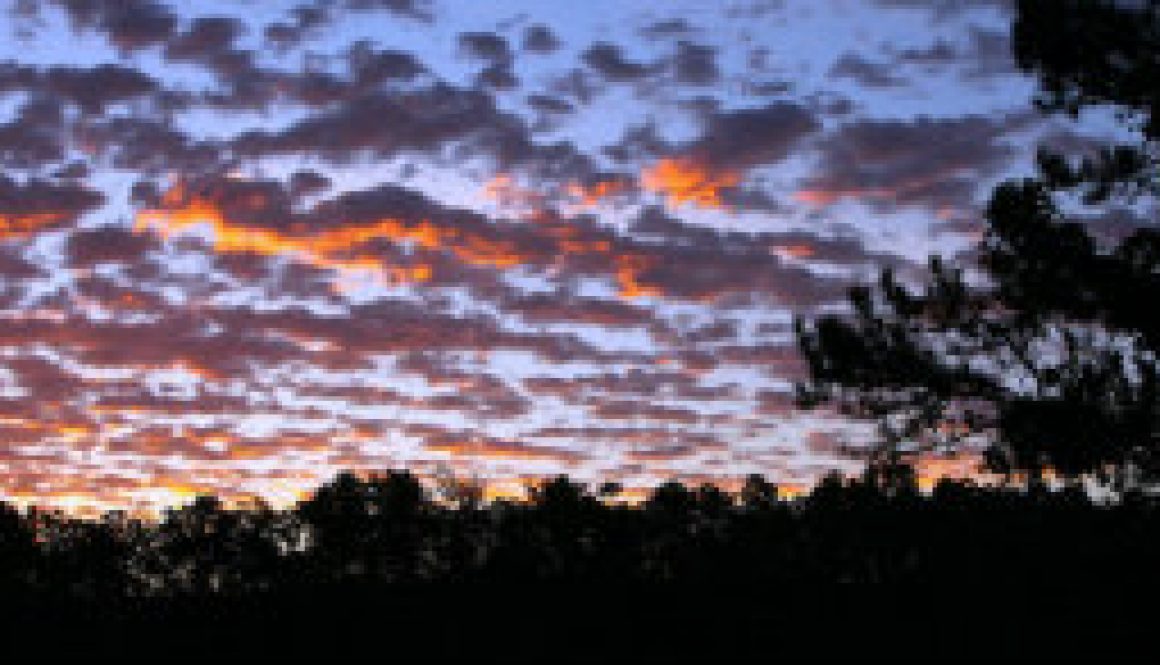

Topaz in Late October 2009
Click on image to enlarge
The gorgeous village of Topaz, on the North Fork of the White River on October 25, 2009. Once a ghost town on the river bank, with a mill and general store, a few families have moved back into the valley. The pictures are of the mill and a look upstream and downstream from the Topaz low-water crossing just upstream from the old mill. Taken with a Canon 5D MKII.


Hummingbird, NO; Moth, YES



